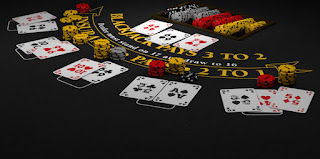Blackjack: The Ultimate Card Game
The objective of the game is straightforward: to beat the dealer's hand without exceeding a total of 21.
Basic Rules:
Blackjack is typically played with one to eight standard decks of 52 cards. Each card has a value: numbered cards are worth their face value, face cards (Jacks, Queens, and Kings) are worth 10 points each, and Aces can be counted as 1 or 11 points, depending on the player's choice.
The game begins with each player placing their bets. The https://blackjack.ooo dealer then deals two cards face-up to each player and one card face-up and one card face-down to themselves. The players' cards are dealt face-up, allowing everyone to see each other's hands.
Players take turns deciding whether to "hit" (take another card) or "stand" (keep their current hand). The goal is to achieve a hand total closer to 21 than the dealer's hand without exceeding it. If a player's hand exceeds 21, they "bust" and lose their bet.
Once all players have completed their turns, the dealer reveals their face-down card. If the dealer's hand totals 16 or less, they must hit until they reach 17 or higher. If the dealer busts, all remaining players win. If the dealer's hand is 17 or higher, their hand is compared to each player's hand, and the higher total wins. Ties result in a "push," and the player's bet is returned.
Blackjack: The Perfect Hand:
Achieving a total of 21 with just two cards (an Ace and a 10-value card) is called "blackjack" and is the highest hand in the game. A blackjack typically pays 3:2, meaning if a player bets $10 and gets blackjack, they win $15 (plus their original bet).
Additional Options:
In addition to hitting and standing, players have several other options:
Split: If a player's initial two cards are of the same value, they can choose to split them into two separate hands, each with its own bet. This effectively doubles their chances of winning but also requires placing an additional bet.
Double Down: After receiving their first two cards, a player may choose to double their original bet in exchange for receiving only one more card. This is typically done when a player believes they have a strong hand and want to maximize their potential winnings.
Insurance: If the dealer's face-up card is an Ace, players may choose to take insurance, which is a side bet that pays 2:1 if the dealer has blackjack. Insurance is usually considered a poor bet statistically and is not recommended by experienced players.
Strategy:
While blackjack is partly a game of chance, skillful players can improve their odds by employing basic strategy. This involves making decisions based on the value of one's hand and the dealer's visible card. Strategies include hitting, standing, doubling down, and splitting based on mathematical probabilities.
Conclusion:




Comments
Post a Comment